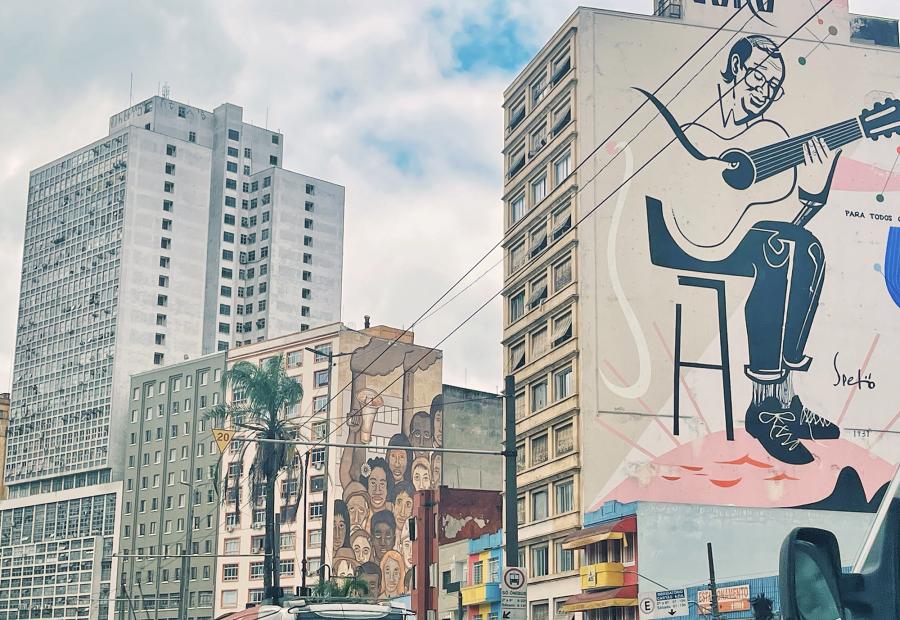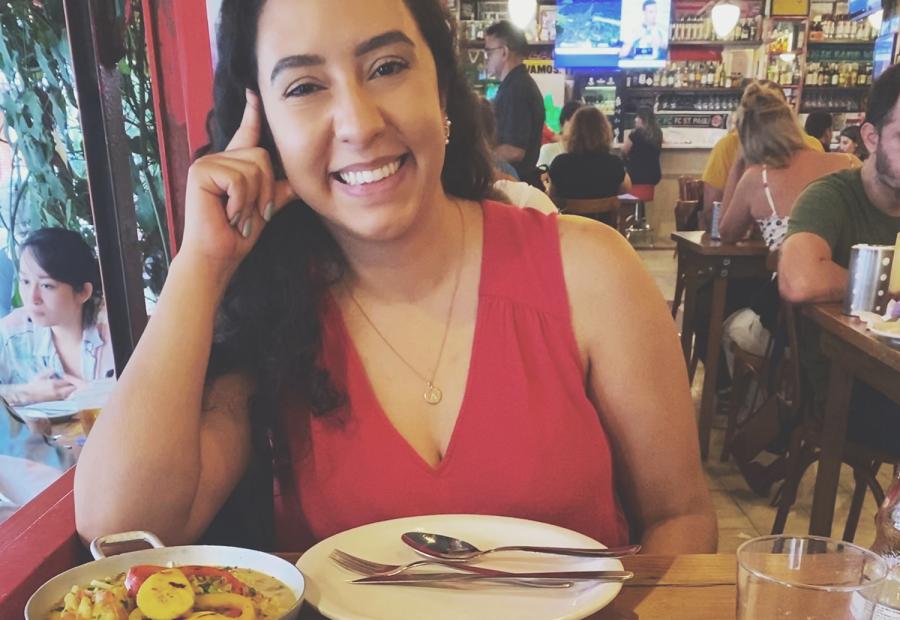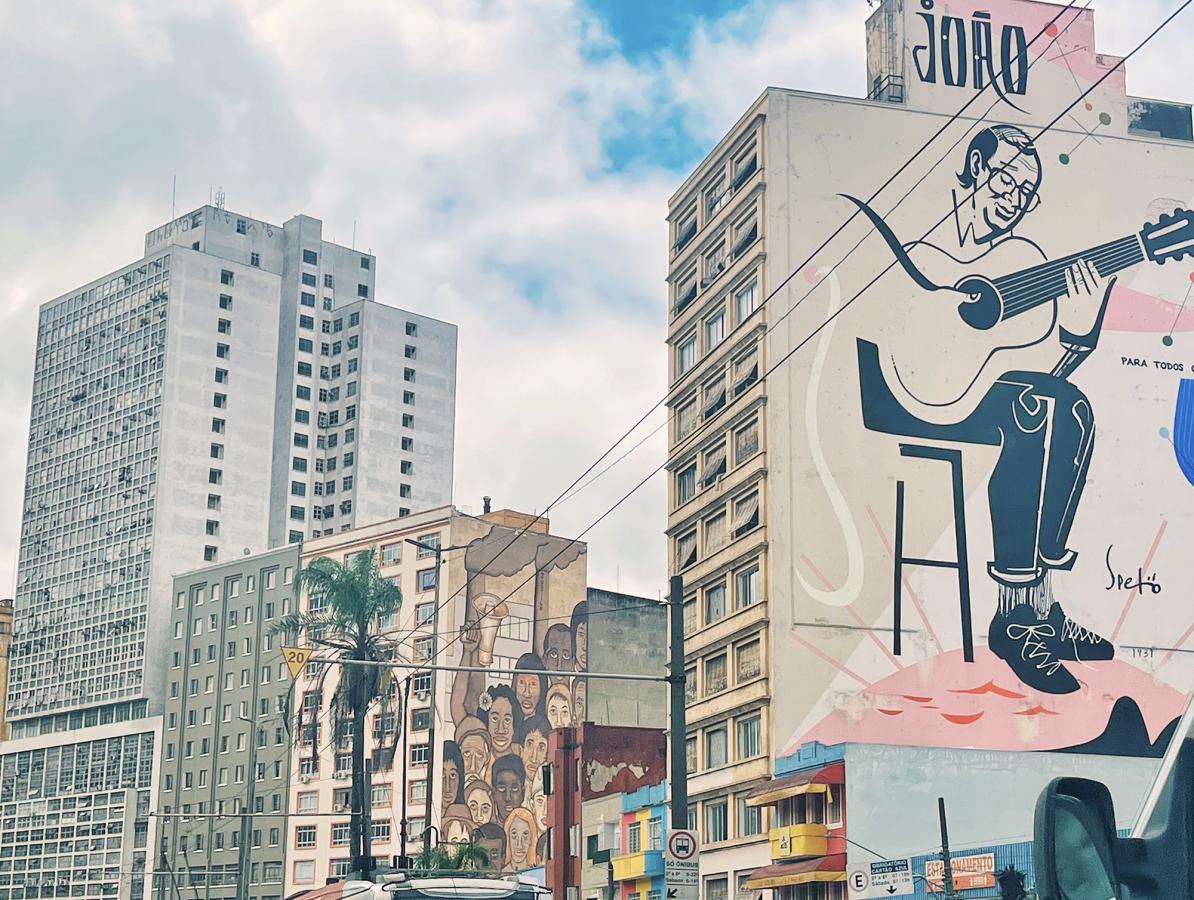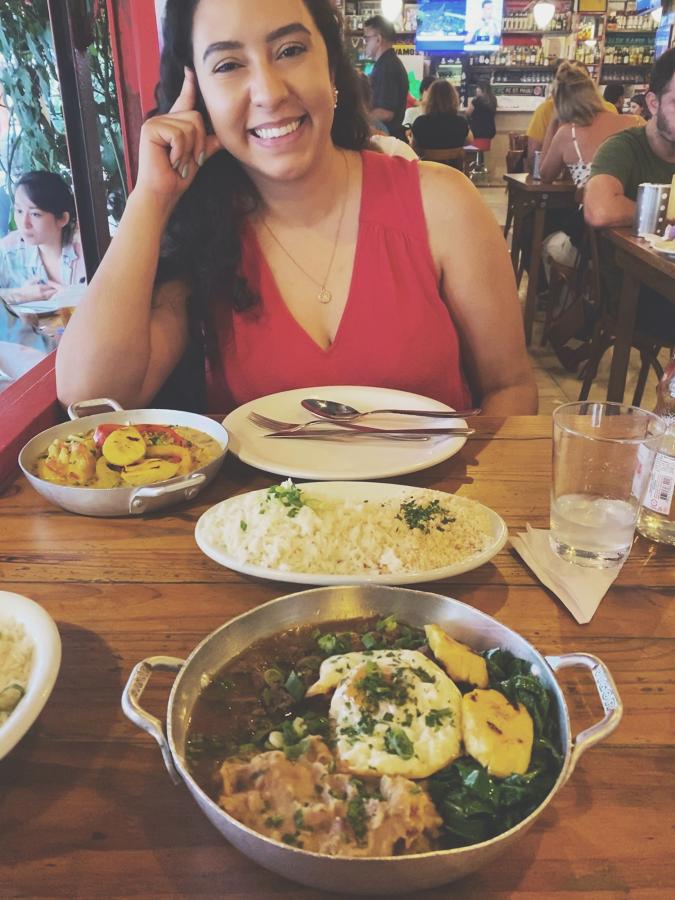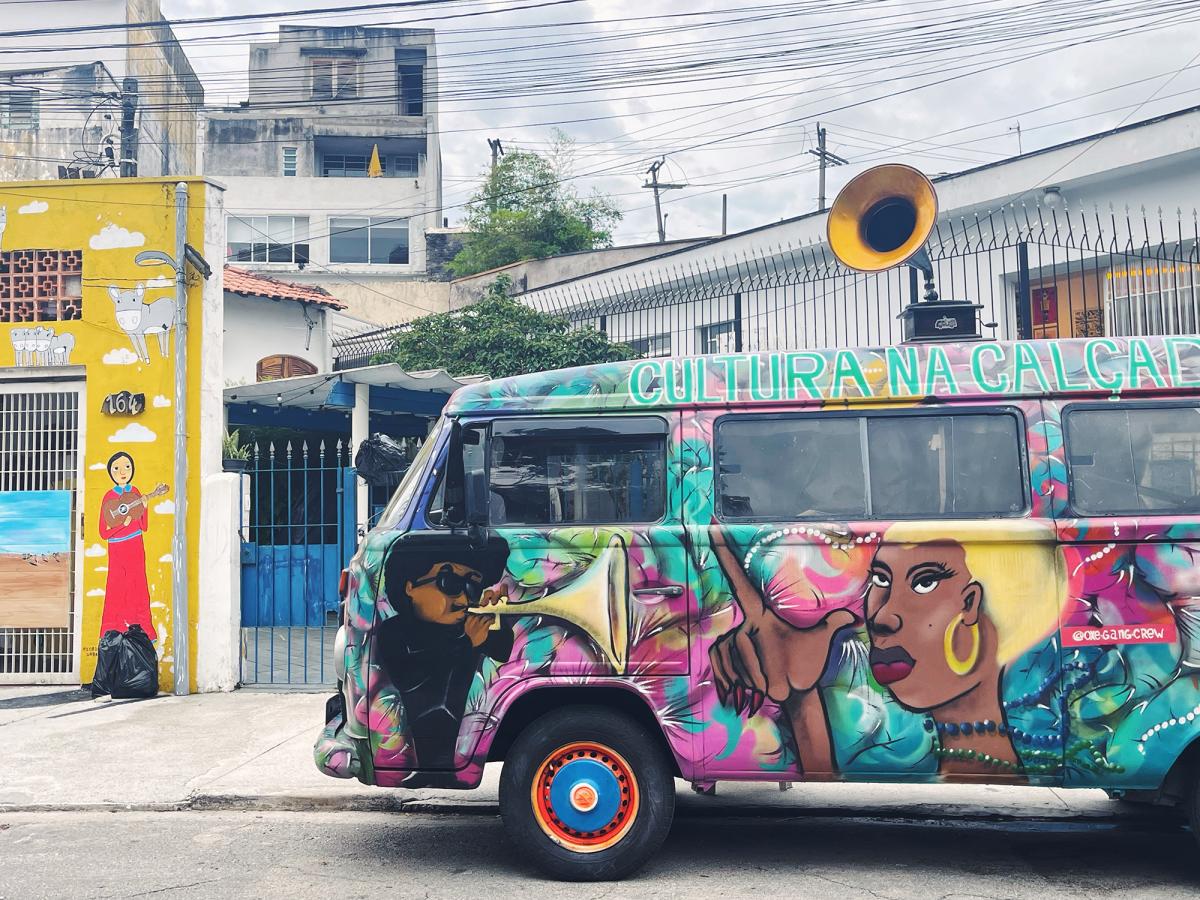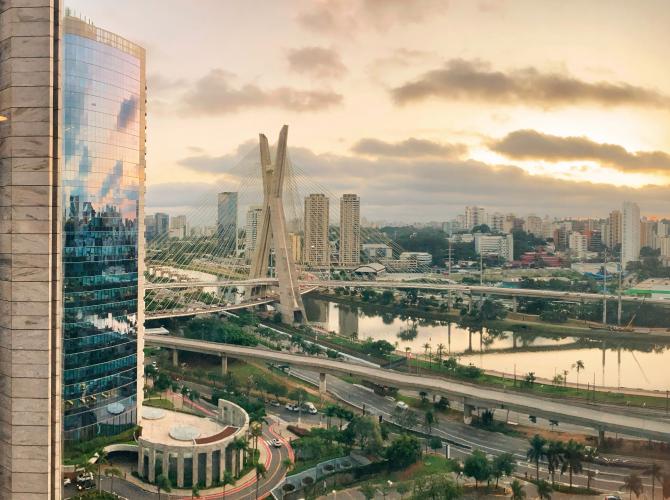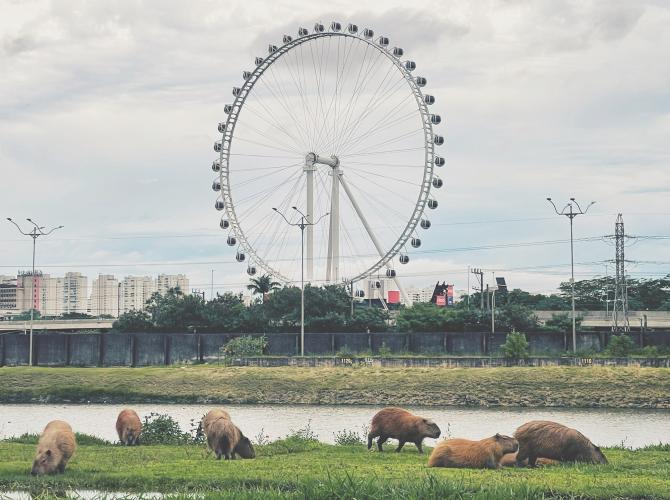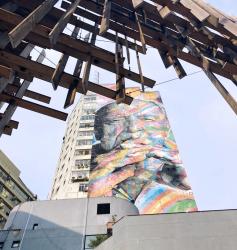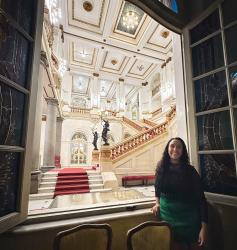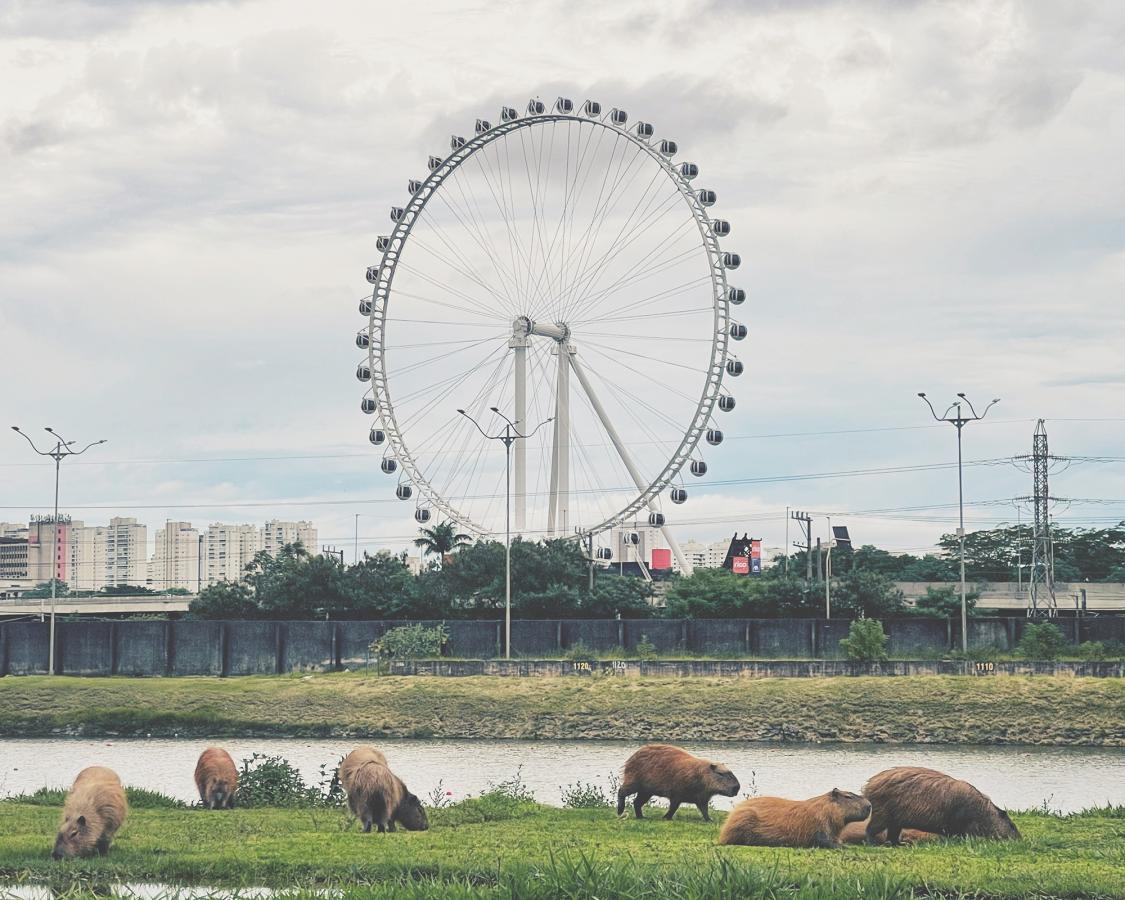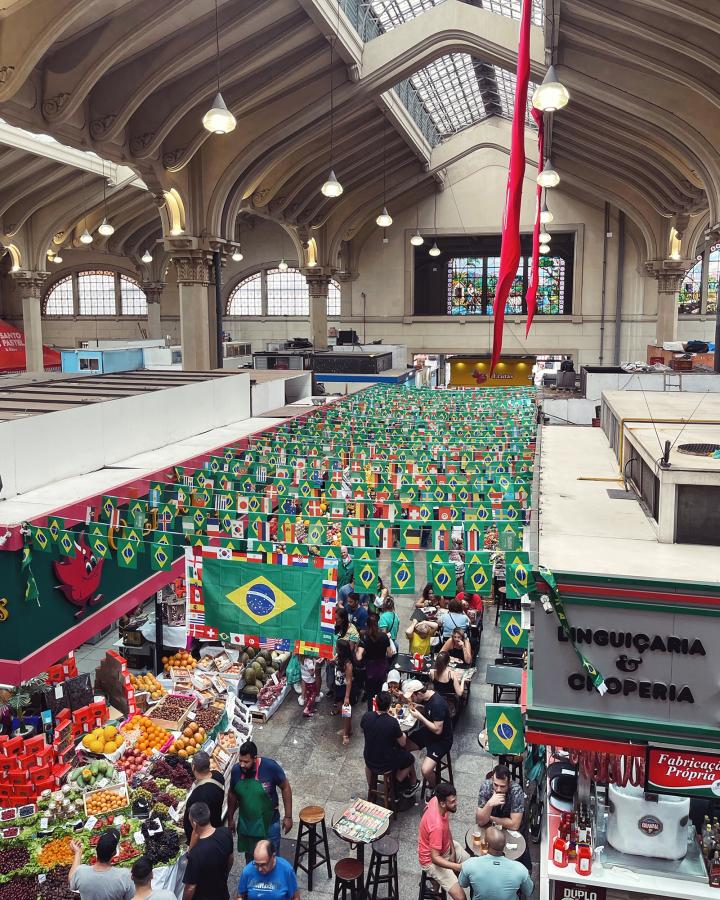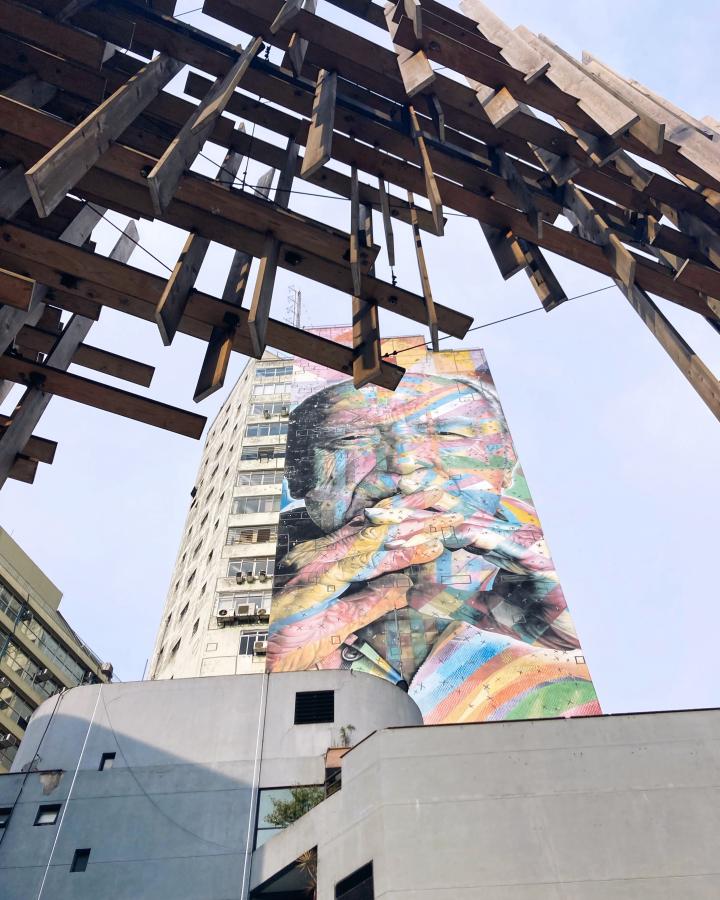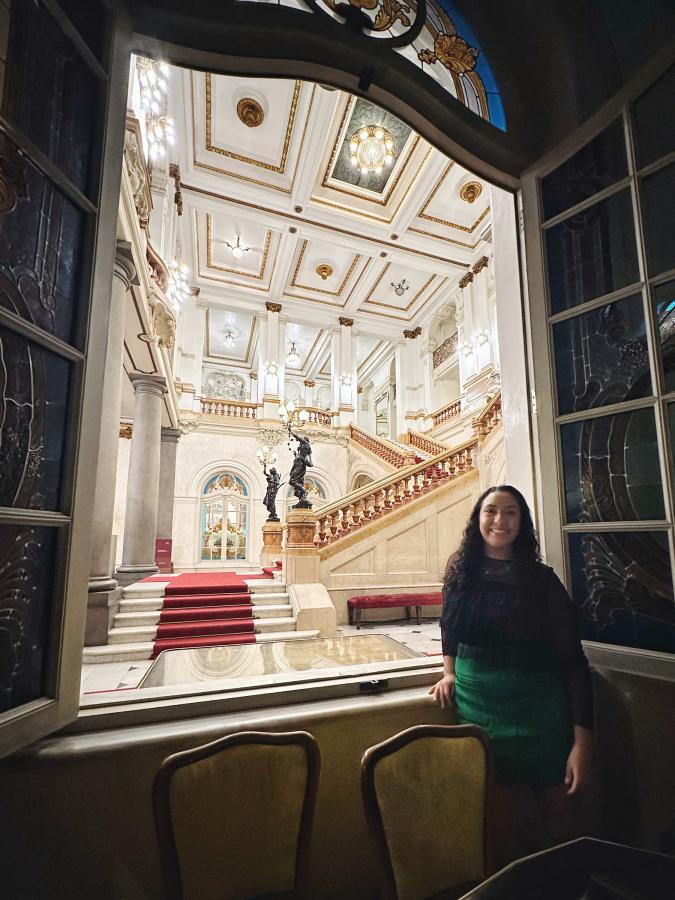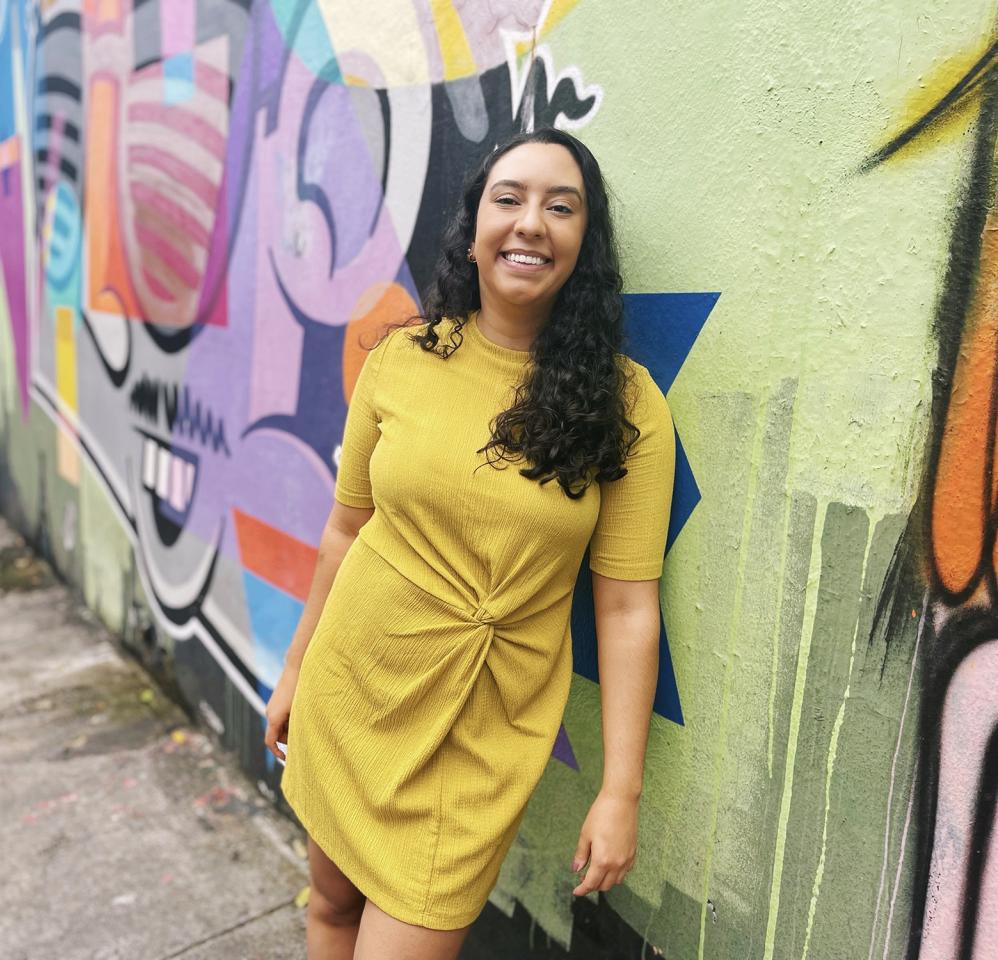
My Town
São Paulo, Brazil
Avril Espinosa-Malpica poses for a photo in Beco do Batman (Batman’s Alley). Every inch of wall in this alley, named after a painting of Batman appeared in the area in the 1980s, is covered with colourful street art. Photos courtesy of Avril.
Avril Espinosa-Malpica (BA’18) is a Vice-Consul and Trade Commissioner for the Consulate General of Canada in São Paulo, and has been living in Brazil’s most populous city since January of 2022.
What three words best describe São Paulo?
Endless, vibrant, bustling.
How did you come to live in São Paulo?
In my job as a diplomat, we get to specify some cities where we would like to be posted next. Since I work in international trade, I wanted a city that was an economic driver in its region, had a rich culture, and would challenge me to learn a new language. São Paulo had an opening and checked off all my interests. I applied and luckily was selected for a three-year position in this great city.
What do you like most about living there?
The warmth and openness of São Paulo’s residents. From Uber drivers to coworkers, everyone is eager to chat and help me feel welcome. São Paulo is the first city I have ever lived in where, only a month after arriving, local colleagues invited me to join them on a trip. It’s a place where I’m warmly greeted by the waiter of a nearby restaurant every time I pass by, even if I don’t go in. As a foreigner who did not know anyone when I first moved here, the warmth I experienced made it easier to settle in and get to know the city through the people I met.
Describe your favourite neighbourhood.
I enjoy walking around Vila Madalena, a vibrant neighbourhood full of colourful murals, local shops, and stands full of trinkets, and where chatter and music emanate from its lively bars. There are countless opportunities to try something new every time you visit the neighbourhood and you’ll inevitably come across some event or other animating its streets.
Vila Madalena is also where the locals go, particularly on the weekends, when its sidewalks are packed with people as parties often flow out into the streets. You don’t even have to be inside a bar or restaurant to get served — as long as you’re in the general area, you can enjoy a drink even if you’re outside.
If you could change one thing about São Paulo, what would it be?
The level of security in the city. Unfortunately, the issue of safety is a well-known concern in São Paulo. However, as long as you remain aware and take precautions, this should not deter you from visiting.
What might surprise a visitor about São Paulo?
Its diversity. São Paulo was built by immigrants and people from every region of Brazil over many generations. The city has the largest population of descendants from Italy, Japan, and Lebanon outside of their respective countries and has also attracted numerous residents from every continent. (Brazil itself has the largest population of people of African descent, outside of Africa.) As with Canadians, I’ve learned that Brazilians are just as multicultural, and their diversity is what has created such a vibrant city, one known for its wide-ranging cultural and gastronomic offerings.
What are your favourite hidden gems or activities that only locals know about?
On Sundays and holidays, many of the main streets close partially to become exclusive bike routes, which take you past the city’s main attractions. You can rent a bike for a couple of hours from one of the many orange Bike Itaú stands via the company’s app. Fun fact: this bike-sharing system includes technology from the Quebec-based company PBSC Urban Solutions, so there’s a little bit of Canada on every street in São Paulo!
What’s the most over-rated tourist hotspot?
Paulista Avenue. I like visiting this area for specific things, such as the Museum of Art of São Paulo (MASP) and the SESC Paulista, both of which I recommend. (SESCs, which in the singular stands for Serviço Social do Comércio — or Social Service of Commerce — are a merge between cultural and community centres.) However, I don’t quite get the hype of walking down the entire length of Paulista Avenue. I think it might be because I’ve gotten my share of big streets and tall concrete buildings, so I would rather take a walk in one of São Paulo’s parks, like Ibirapuera Park, than venture along this long and busy avenue.
How easy is it to meet new people?
People tend to be quite open to connecting and chatting. Brazil is a relationship- and people-driven culture. Be patient, however, when making plans — the hustle mentality of this metropolis and the slightly less strict time-keeping of Brazilians mean that events and meetups might not always start on time. Also don’t be surprised if people you’ve just met ask for your Instagram handle or WhatsApp number to stay in touch — these tend to be seen as less private means of communication than in Canada.
What is one local custom that every visitor should know about?
People don’t usually eat food with their hands. To be polite, either wrap your sandwich in a napkin before grabbing it, or use a fork and knife to eat your pizza.
Looking to connect with your UBC alumni community?
If you live outside our campus communities in the Lower Mainland and Central Okanagan, visit the Global Alumni Network page to see if there’s an alumni ambassador or social media community where you live.
Alumni volunteers also host fun My Town Meetups in locations around the world. Check out our Meetups page to see if there’s a gathering near you — or sign up to host one in your location!
























